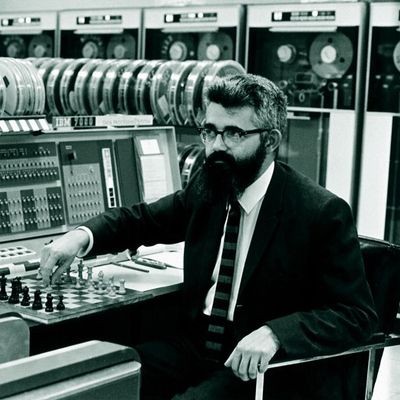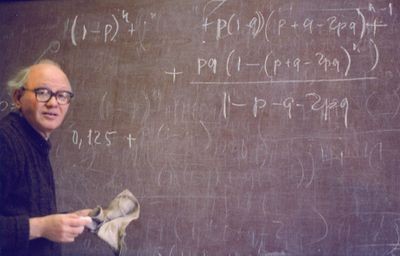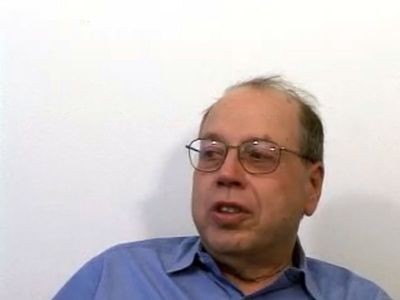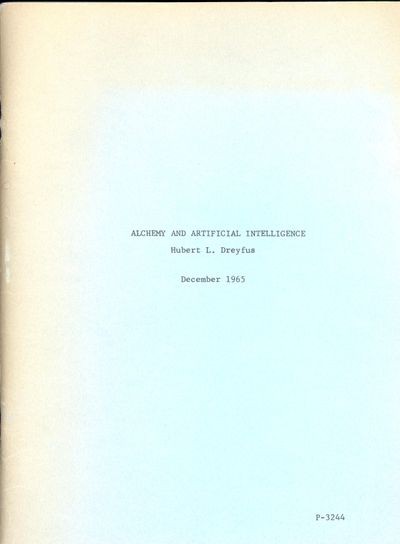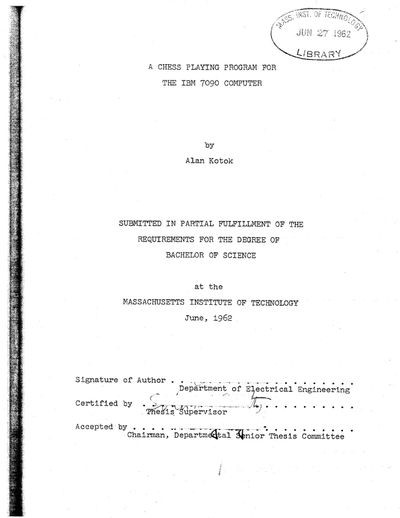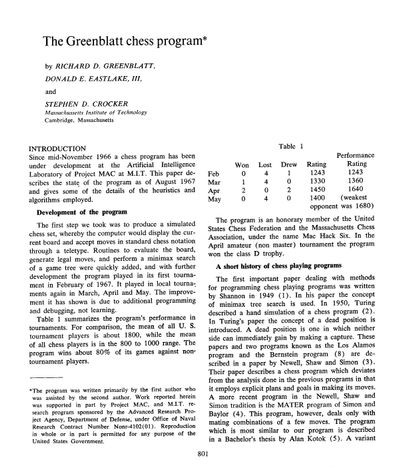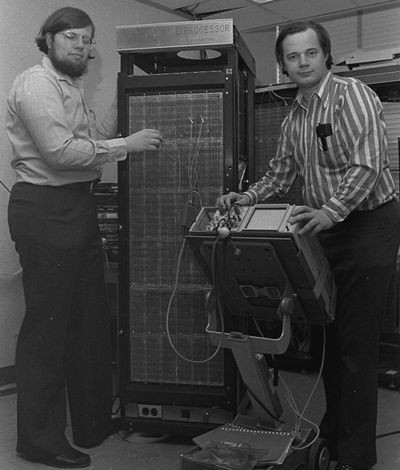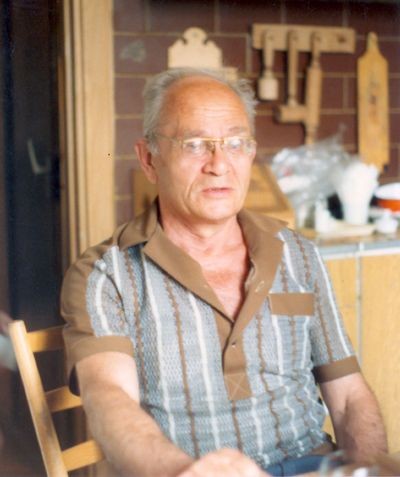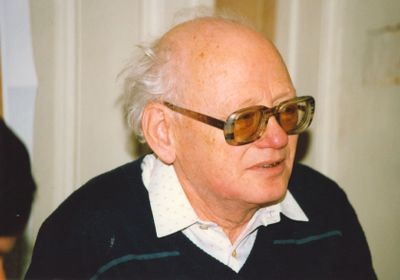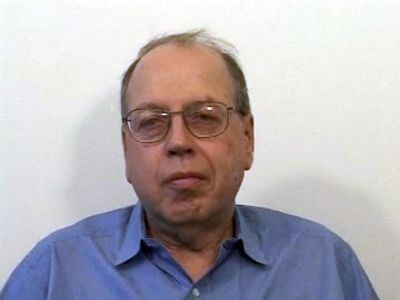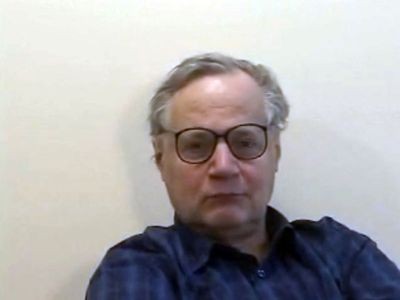Getting Going
By the early 1960s, students at almost every major university had access to computers, which led to more research on computer chess. In 1959, MIT freshmen Alan Kotok, Elwyn R. Berlekamp, Michael Lieberman, Charles Niessen, and Robert A. Wagner started working on a chess-playing program based on research by Artificial Intelligence pioneer Professor John McCarthy. By the time they had graduated in 1962, the program could beat amateurs.
Richard Greenblatt, an MIT programmer and accomplished chess player, looked at Kotok’s program and decided he could do better. He added fifty heuristics (rules of thumb) that captured his in-depth knowledge of chess. His MacHack VI program for the DEC PDP-6 computer played at a level far above its predecessors. In 1967 it was the first computer to play against a person in a chess tournament and earned a rating of 1400, the level of a good high-school player.



